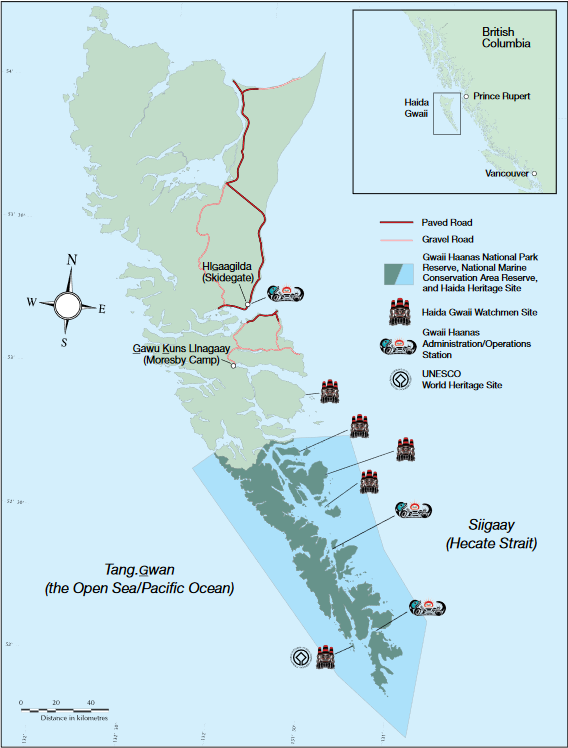Adaptive Co-management Case Study
Ecosystem Based Management (EBM) in Gwaii Haanas
The EBM Working Group is an on-going partnership of the Council of Haida Nations, Parks Canada, and Fisheries and Oceans Canada, along with other academic and non-academic collaborators.

Gina ’Waadluxan KilGuhlGa Land-Sea-People Management Plan, 2018)
The project objective is to co-develop an evaluation framework to assess fisheries and marine resources in Gwaii Haanas and support collaborative and adaptive ecosystem-based management
The Gwaii Haanas National Park Reserve, National Marine Conservation Area Reserve, and Haida Heritage Site Gwaii Haanas is a recognized leader in integrated and adaptive management, ensuring that protection, restoration and ecologically sustainable use opportunities are mutually achieved.
Overview of EBM in Gwaii Haanas
What circumstances led to the initiation of the initiative?
Who is involved?
The Gwaii Haanas Agreement, which was signed in 1993, describes how the terrestrial area of Gwaii Haanas will be managed cooperatively by the Haida Nation and the Government of Canada through the Archipelago Management Board (AMB). Although the two parties have differing views on ownership of Gwaii Haanas, they agree that:
What are the outcomes?
- With reference to LSP objectives and guidance from the AMB, a technical team has collaboratively developed a suite of governance, socio-economic, cultural and ecological indicators.
- A process of testing and evaluating fisheries of cultural and economic importance is underway in collaboration with Haida rights holders, government, and industry.
- Outcomes of evaluative process will determine status of key stocks in Gwaii Haanas and support AMB efforts to collaboratively and adaptively manage fisheries and other marine resources.

